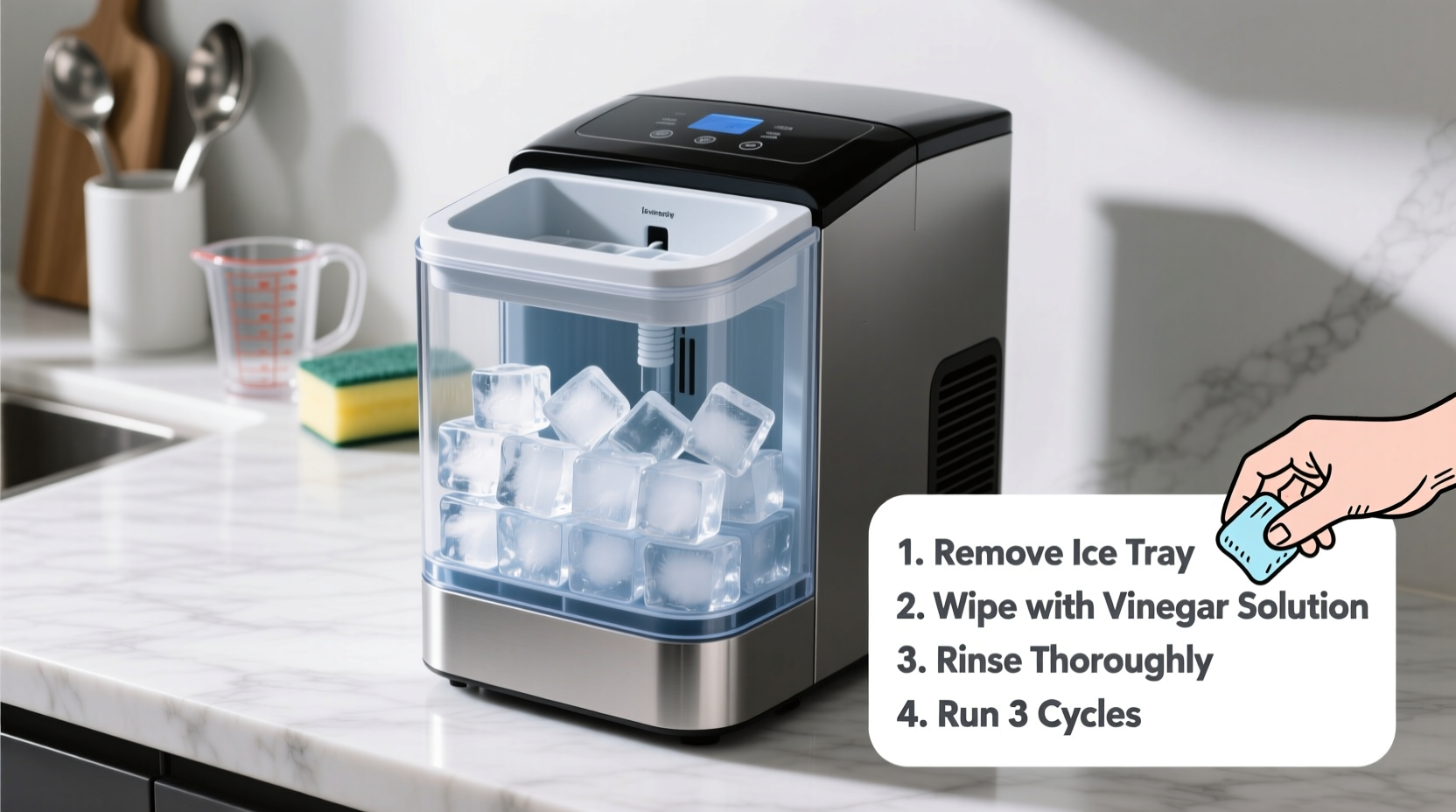Countertop ice makers are convenient appliances that deliver fresh ice in minutes, making them essential in homes, offices, and hospitality settings. However, like any appliance that handles water, they are prone to mineral buildup, mold, and bacterial growth if not cleaned regularly. A dirty ice maker doesn’t just produce cloudy or off-tasting ice—it can pose health risks. Cleaning your unit properly ensures cleaner, safer ice and extends the life of your machine.
Why Regular Cleaning Matters

Ice may seem sterile, but it’s only as clean as the machine that produces it. Water lines, reservoirs, and evaporator plates accumulate bacteria, algae, and limescale over time—especially in areas with hard water. Without routine maintenance, these contaminants can transfer into your ice, affecting both flavor and safety.
The U.S. Food and Drug Administration (FDA) emphasizes that food-contact surfaces, including those in ice machines, must be kept clean to prevent microbial contamination. Even if your ice looks clear, it could harbor unseen pathogens such as Pseudomonas or Legionella, especially in warm, moist environments.
Step-by-Step Guide to Deep Cleaning Your Ice Maker
A thorough cleaning process removes residue, eliminates odors, and prevents mechanical issues caused by scale buildup. Follow this detailed timeline to ensure no step is missed.
- Unplug the unit and empty all ice. Discard existing ice—never reuse it after cleaning. Remove the ice bin and set it aside.
- Disassemble removable parts. This typically includes the ice tray, water distributor, and cover. Refer to your user manual for specific instructions.
- Wash removable components with warm, soapy water. Use a mild dish detergent and a soft sponge. Avoid abrasive scrubbers that can scratch plastic surfaces.
- Prepare a cleaning solution. Mix 1 part white vinegar with 1 part water, or use a manufacturer-approved ice machine cleaner. Vinegar naturally dissolves limescale and kills many types of bacteria and mold.
- Run a cleaning cycle. Pour the solution into the water reservoir. Plug in the machine and run a \"clean\" or \"wash\" cycle if available. If not, manually run several small batches of the solution through the system, allowing it to circulate for 5–10 minutes between cycles.
- Rinse thoroughly. Empty the reservoir and refill it with clean water. Run 2–3 rinse cycles to flush out any remaining cleaning solution.
- Wipe down exterior surfaces. Use a damp cloth with a drop of dish soap to clean the outside, control panel, and bin. Dry completely before reassembly.
- Reassemble and test. Put all parts back, plug in the unit, and make a fresh batch of ice. Discard the first two batches to ensure purity.
“Regular descaling and sanitation prevent biofilm formation—the slimy layer of microbes that cling to internal surfaces and resist casual cleaning.” — Dr. Alan Torres, Microbiologist and Appliance Hygiene Consultant
Do’s and Don’ts of Ice Maker Maintenance
| Do’s | Don’ts |
|---|---|
| Use distilled or filtered water to reduce mineral deposits. | Never use bleach unless specified by the manufacturer—it can corrode seals and leave harmful residues. |
| Clean the air filter (if equipped) every month to maintain airflow. | Avoid submerging the main unit in water—only removable parts should be washed. |
| Inspect hoses and connections periodically for cracks or leaks. | Don’t ignore strange odors or slow production—they signal internal buildup or contamination. |
| Store the unit with all water drained if not in use for extended periods. | Never use abrasive pads or harsh chemicals like oven cleaner on plastic components. |
Real Example: How One Office Improved Ice Quality
An Atlanta-based coworking space reported complaints about “plastic-like” tasting ice from their kitchen’s countertop maker. Staff initially assumed the water source was the issue and installed a new filter—but the problem persisted. Upon inspection, a technician discovered a thick biofilm coating the evaporator plate and distribution tube, caused by infrequent cleaning and high humidity.
After a full vinegar-based cleaning cycle and replacement of the water line, the ice tasted neutral again. The facility implemented a monthly cleaning schedule and assigned staff to rotate responsibility. Within weeks, employee satisfaction with kitchen amenities rose by 37% in internal surveys.
Maintenance Checklist for Long-Term Performance
Use this checklist monthly to keep your ice maker running efficiently and hygienically:
- ✅ Empty and discard existing ice
- ✅ Unplug the unit for safety
- ✅ Remove and wash bin, tray, and cover
- ✅ Descale internal components with vinegar or approved cleaner
- ✅ Run multiple rinse cycles with fresh water
- ✅ Wipe exterior and control panel
- ✅ Check for leaks or unusual noises during operation
- ✅ Record cleaning date in log or calendar
Frequently Asked Questions
Can I use lemon juice instead of vinegar to clean my ice maker?
Lemon juice contains citric acid, which has some descaling properties, but it’s less effective than vinegar and may leave behind sugars or pulp that attract bacteria. White vinegar is preferred due to its acetic acid content and lack of residue.
Why does my ice taste funny even after cleaning?
Residual cleaning solution or lingering biofilm might still be present. Try running additional rinse cycles with plain water. Also, check your water filter—if it hasn’t been replaced in 6 months, it could be contributing to off-flavors.
Is it safe to use commercial ice machine cleaners?
Yes, if they are labeled safe for residential countertop units. Always follow dosage instructions and rinse thoroughly. Look for NSF-certified products designed specifically for food equipment sanitation.
Keep Your Ice Fresh and Your Machine Running Strong
Cleaning your countertop ice maker isn’t just about aesthetics—it’s a critical part of household and workplace hygiene. With consistent care, you can avoid costly repairs, extend the lifespan of your appliance, and enjoy ice that’s truly fresh, clear, and safe to consume. The few minutes spent on maintenance each month pay off in better taste, improved efficiency, and peace of mind.









 浙公网安备
33010002000092号
浙公网安备
33010002000092号 浙B2-20120091-4
浙B2-20120091-4
Comments
No comments yet. Why don't you start the discussion?